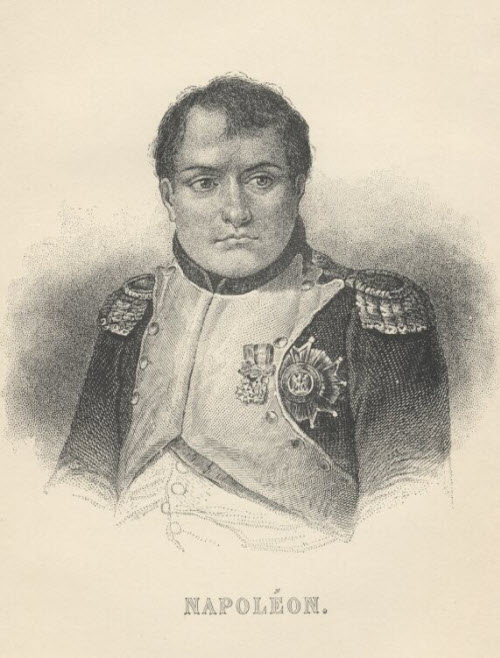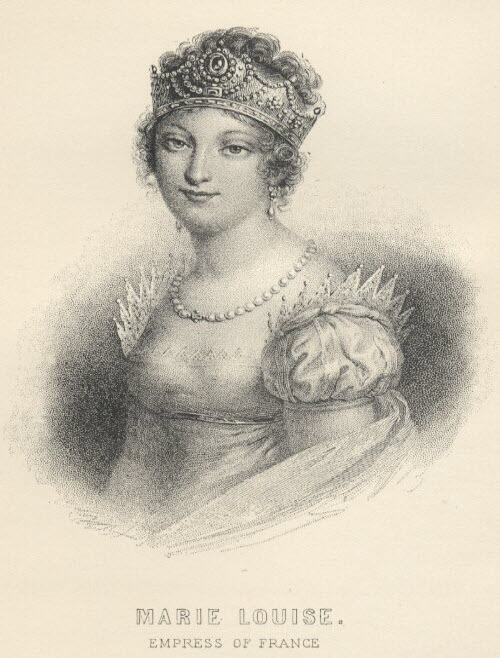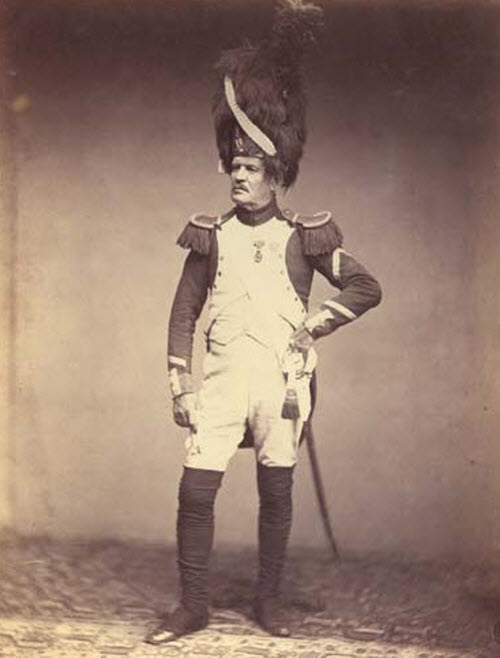Events Leading Up to the Battle of Waterloo
Napoleon's Date With Destiny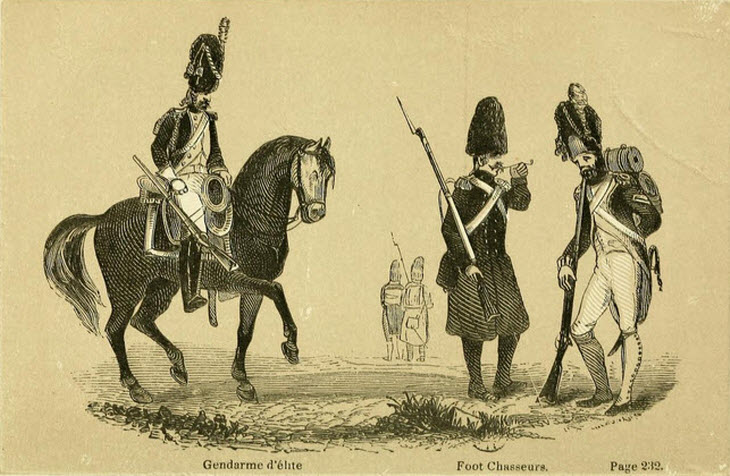
The Hundred Days of Napoleon
The Battle of Waterloo was Waterloo was one of the most important military engagements in all history, fought June 18,1815, between the allied forces of Great Britain, the Netherlands, and Prussia on the one hand, and France on the other. The battle was the culmination of the campaign resulting from the escape of Napoleon I. from his exile at Elba.
The Hundred Days.—Napoleon, on his return from Elba, reached Paris on Mar. 20,1815. The great powers, whose representatives were then in session at Vienna, at once agreed to unite for his final overthrow, and the forces of Great Britain, together with those of the Netherlands and Brunswick, were placed in command of the Duke of Wellington, the Prussians were united under Field-Marshal Blucher, and the forces of Austria and Russia were to be commanded by Prince Schwarzenberg. Napoleon decided to strike his blow before the enemy was ready to receive him, but wished to postpone the movement as long as possible in order to gather his forces. He judged that 800,000 men would be necessary to defend his recovered empire, and as early as June 1 there were 560,000 men on the rolls. Charras has shown, however, that at that date there were really only 198,000 troops in condition for active service.
Plan of Campaign.-—Napoleon kept himself fully in- formed through private sources of the movements of his enemies. Though by guarding the frontier with the utmost strictness he endeavored to keep his own plans a secret from the enemy, it afterward appeared that he had not been completely successful. The Prussians under Blucher, with headquarters at Namur, were the first to be ready for action. Of this Napoleon was fully aware, and accordingly he decided to strike a decisive blow before Wellington could come to the support of his ally. The line occupied by the two armies of Wellington and Blucher on the 10th of June may be roughly described as extending about 150 miles from Ostend, on the channel, through Brussels, to Liege, in the eastern part of Belgium, The headquarters of Wellington were at Brussels. Napoleon very naturally attached not a little importance to the fact that Wellington’s army depended upon the channel ports for its supplies, while the supplies of the Prussians must come from the Rhine; for either army in case of defeat would naturally, Napoleon thought, fall back toward its base, and thus the two forces would be driven farther apart. Napoleon’s plan of operations seemed to be invited by the fact that a great turnpike which furnished admirable facilities for the movement of an army extended from Brussels almost due S. to the French frontier. Wellington’s array was entirely W. of this road, while Blucher’s was entirely E. of it. But Wellington believed that the emperor would strike the blow at the N. W. for the purpose of cutting off the British and Dutch from their line of supplies. Ever afterward, as his Memorandum of 1842 shows, Wellington believed that Napoleon might have attacked at that point with greater chance of success. It was this belief which led the British commander, even up to the hour when the French crossed the frontier, to keep his forces distributed at points convenient for immediate concentration either at the western or at the eastern end of the line. Wellington has often been criticised for this extension of his forces, but it would seem that a sufficient answer to this criticism is found in the fact that when the attack came he was able to concentrate his troops in time to frustrate the advance at Quatre Bras, upon which so much depended.
The Number and Position of the Forces.—At the beginning of the campaign the Prussian force under the command of Blucher consisted of four corps: the first, under Ziethen, of 32,692 men, stationed at Charleroi; the second, under Pirch, of 32,704 men, at Namur; the third, under Thielmann, of 24,456, at Ciney; the fourth, under Bulow, of 31,102, at Liege; constituting a total, including 3,120 wagoners, of 124,074 men. This force consisted mainly of veterans, even the youngest of them having seen hard service in 1813 and 1814. Blucher’s corps commanders were all experienced officers, though Billow was the only one of them who had ever before had an independent command. Wellington’s force was a motley collection made up from different nationalities and speaking different languages. The number of the British troops was 31,253; of the king’s German legion, 6,387; of Hanoverians, 15,935; of Dutch-Belgians, 29,214; of Brunswickers, 6,808; of the Nassau contingent, 2,880; of engineers, etc., 1,240; making a total of 93,717, of whom 69,829 were infantry, 14,482 cavalry, and 8,166 artillery. The force was grouped into two corps, the first, of 25,233, commanded by the Prince of Orange; the second, of 24,033, by Lord Hill; while the reserve, of 20,563, and the cavalry and artillery were under the more immediate direction of the duke himself. The commanders of this motley army, and even the subordinate officers, were men of large military experience, though the army as a whole was declared by the duke to be the poorest he had ever led.
Until the blow was struck Wellington deemed it necessary to guard the approaches by Lille and Ath, and by Mons and Hal, and consequently his first corps was stationed about Mons, Enghien, and Nivelles, while his second was distributed at points as far W. as the Scheldt. The reserve was held in the vicinity of Brussels. The French army was organized in five corps, besides the reserve. The first corps, d'Erlon's had 19,939 men; the second, Reille’s, 24,361; the third, Vandamine's, 19,160; the fourth, Gerard’s, 15,995; and the sixth, Lobau’s, 10,465. Resides these, the Guard contained 20,884, and the reserve 13,784, making a total fighting force of 124,588 men. Of these, 89,415 were infantry, 23,595 cavalry, and 11,578 artillery, with 344 guns.
Napoleon decided to concentrate his army on the French frontier a few miles S. of Charleroi, and to this end the first and second corps were sent to Solre, about 8 miles S. W. of Charleroi, the third to Philippeville, and the fourth and sixth, with the reserve, to Beaumont. These positions offered good roads to the point of crossing the Sambre at and near Charleroi, about 8 miles away. Though the Prussian army had pushed its line S. of Charleroi, the concentration of the French at the three points named was so quietly and successfully accomplished that on the evening of June 14 Napoleon believed his movements had been unobserved. But in this he was in error, for as early as the evening of the 13th Ziethen had reported to Blucher the gathering of two great camps at Solre and Beaumont, and had received orders in return to send heavy baggage back to Gembloux. On the evening of the 14th Blucher received further reports, whereupon he ordered Ziethen to fall back and hold Fleurus, a village 7 miles N. of Charleroi. At Wellington’s headquarters it was also understood that the enemy was approaching. Muffling, then with the duke, says that on the 13th and 14th it was positively known that the enemy was concentrating in the neighborhood of Maubeuge.” On the evening of the 14th, Napoleon himself, who had just arrived from Paris and established headquarters at Beaumont, sent to all the regiments one of those stirring addresses he was accustomed to issue to his troops on the eve of a great battle. His orders were that all should be ready to move at 3 a. m. on the 15th.
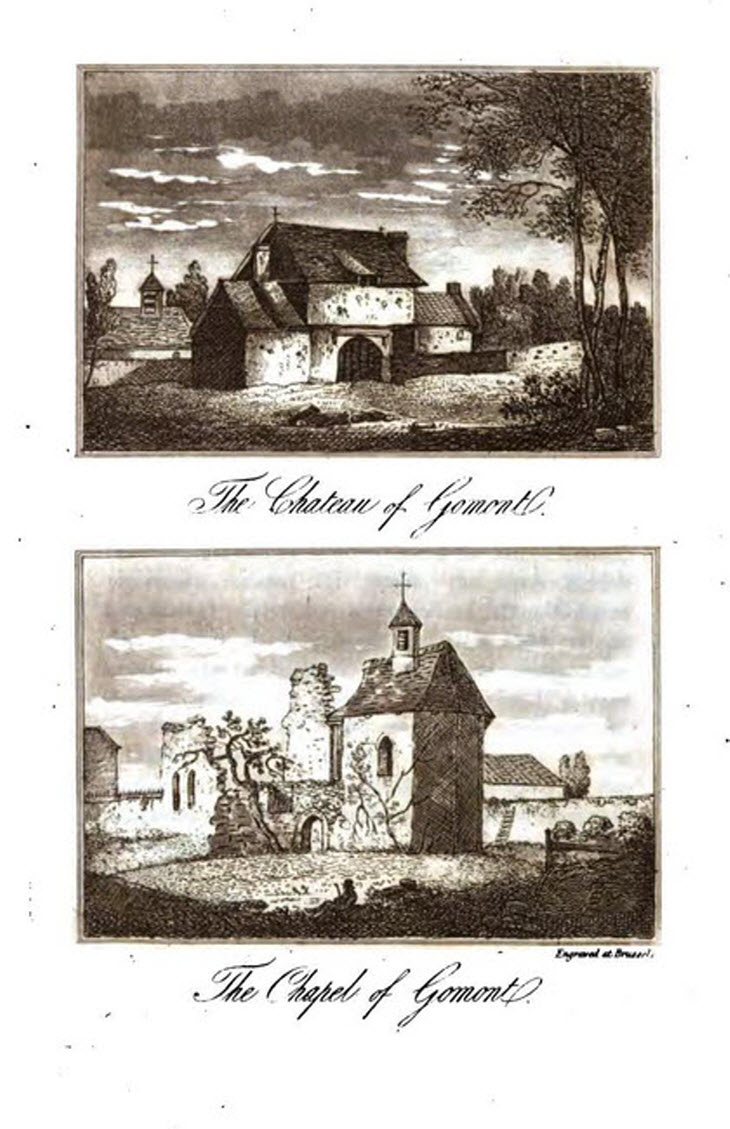
Ligny and Quatre Bras.—Various causes delayed the movements of the French. Napoleon had supposed that his whole force would be across the Sambre at noon, but in fact when night came on a little less than 100,000 were N. of the river. A glance at the map will show that two great roads extend northward from Charleroi, the one running almost due N. through Quatre Bras and Waterloo to Brussels. the other running in a northeasterly direction through Fleurus and Sombreffe to Gembloux. These two roads are crossed at Sombreffe and Quatre Bras by the great turnpike leading from Namur to Nivelles and forming the most important line of connection between the allied armies. At a meeting of Wellington and Blucher as early as May 3 it was agreed that if Napoleon should cross at Charleroi, the utmost endeavors should be put forth to prevent his taking possession of either Sombreffe or Quatre Bras. Napoleon, on the other hand, was equally aware of the importance of securing one or both of these points. He met with a stubborn resistance, especially from the Prussians under Ziethen, who was slowly driven back contesting every point on the way. Ziethen held Fleurus at dark, but the most of his forces were already encamped on the slopes about Bry and Ligny. It was while Napoleon was near Fleurus that he was joined by Marshal Ney, who, in response to the emperor’s call at the last moment, had just reached the army. Napoleon assigned his old marshal to the command of the left column, intrusting to him the great work of opening the road through Quatre Bras to Brussels. Ney, not having been with the army, was quite unacquainted with its organization, and the orders that had been given the corps commanders. He gathered the threads into his hands, however, as best he could, and in the course of the afternoon pushed forward through Gosselies to Frasnes, and finally to the vicinity of Quatre Bras. Here he met with a stubborn resistance by a brigade of Wellington’s troops. It was now eight o'clock and nearly dark, and the French had been on the march for seventeen hours. Leaving his troops as he had brought them up, Ney returned to Charleroi, where he remained until two o’clock in the morning of the 16th with Napoleon.
Meanwhile the forces were gathering in the north for the contests of the morrow. Ziethen at daybreak of the 15th had sent a message to Blucher that his posts had been driven in, and Blucher at once issued orders to the corps of Pirch, Thielmann, and Bulow. Pirch reached Ligny at five, and Thielmann at eight on the morning of the 16th. The march of Billow, however, was less fortunate. Stationed at Liege, he had received his orders at a later hour, and as the dispatch had not told him that the conflict had already begun, did not press forward with unusual haste. The consequence was that it was not till noon of the 16th that he reached Hannut, 25 miles from Ligny, although his orders had been more explicit he might have arrived at Ligny in time to have saved the battle.
Wellington received the first, news of Napoleon’s advance at about three o’clock in the afternoon of the 15th at Brussels. He hesitated, however, to issue orders until he should receive further information, alleging as a reason that the French design was not yet sufficiently revealed. It lent he feared the attack at Charleroi was designed merely to conceal a more formidable advance by way of Mons. It was therefore not until he had received further news in the evening assuring him directly from Mons that the enemy Tad turned his entire force against Charleroi that he two orders—the first to be in readiness, and the second to move the whole army to the left.
The delays that occurred on. the part of the French on the morning of the 16th can be accounted for only by the supposition that Napoleon was entirely ignorant of the condition and situation of his enemies, and that his conjecture in regard to their movements and purposes were grossly erroneous. At six o’clock Grouchy reported to Napoleon that the Prussian army was deploying before Fleurus, where the corps of Ziethen had already been joined by that of Pirch. It was not until eight o’clock, after Thielmann’s corps, having inarched 15 or 18 miles from Namur, had joined the other Prussians, that Napoleon issued the orders for the day. He then formed the army into two wings, giving the right to Grouchy, the left to Ney, and keeping the reserves under his own more immediate supervision. The orders that he gave to Grouchy and Ney show that he had no adequate conception of what was before him. As if there were hardly more than a skirmish line of Prussians to be brushed aside, he ordered Grouchy “ to march on Sombreffe and take up a position there.” He was then “to send an advance guard to Gembloux and reconnoiter all the roads, especially that to Namur, establishing also communication with Marshal Ney.” To Ney he writes in equally explicit terms. He says he will himself be at Fleurus before noon; that he will clear the road to Gembloux before three: that he will there decide what future course to pursue. His intention was to march on Brussels, and Ney was directed to be ready to start for Brussels in the evening.
Ney received the order between ten and eleven, but did not succeed in bringing up the scattered forces from the rear so as to begin the advance from Frasnes until between one and two. Wellington arrived on the field from Brussels at about eleven. The emperor was not ready to attack until two; but before ordering an advance he sent a note to Ney directing him to drive off vigorously what was before him, and then to wheel and assist in the annihilation of the Prussians. But although at first Ney made good progress and seemed for a time likely to secure the Namur road at Quatre Bras, the arrival of Picton at about three made all further advance impossible. At six Ney received a further dispatch from the emperor saying that the Prussians were hotly contesting their attacks, and calling upon him “ to maneuver immediately in such a manner as to envelop the right of the enemy and fall upon his rear.” Thereupon Ney called up all his reserves for another desperate attack. But Wellington’s force had now been increased to over 30,000 men, and. feeling himself now superior to the enemy, the duke took the offensive and drove back the exhausted troops of Ney to Frasnes. Here the corps of d’Erlon, which by a misunderstanding had marched over to assist Napoleon and then turned back, came up just in time to prevent further pursuit by the allies.
This defeat of Ney at Quatre Bras compelled Napoleon to finish the battle of Ligny without his assistance. The desperate fight had continued about three hours, chiefly on the Prussian left, where Vandamme had attacked again and again without important results. At about half-past six when the Prussians had become entangled in the indecisive results all along the line, the emperor ordered the Guard to charge upon the enemy’s center. The furious onsets of the French pierced the Prussian line and threw it immediately into confusion. The French captured twenty-one guns; but darkness prevented pursuit. Blucher, who had fallen from his horse and been disabled, at this point turned over the command to Gneisenau, his chief of staff. In the course of the night Gneisenau decided upon a general retreat northward upon Wavre. and gave orders to start at daylight. By this movement Napoleon was completely deceived. Never thinking that the Prussians would abandon their source of supply at Namur, he assumed that they had retreated in that direction. On the morning of the 17th he wrote Ney: "The Prussian army has been put to rout; Gen. Pajol is pursuing it on the road to Namur and Liege." It was the error of this supposition that made victory impossible on the following day.
Related Articles
